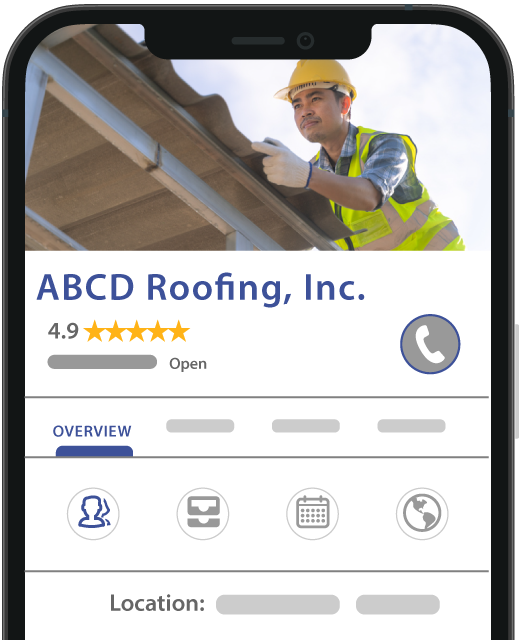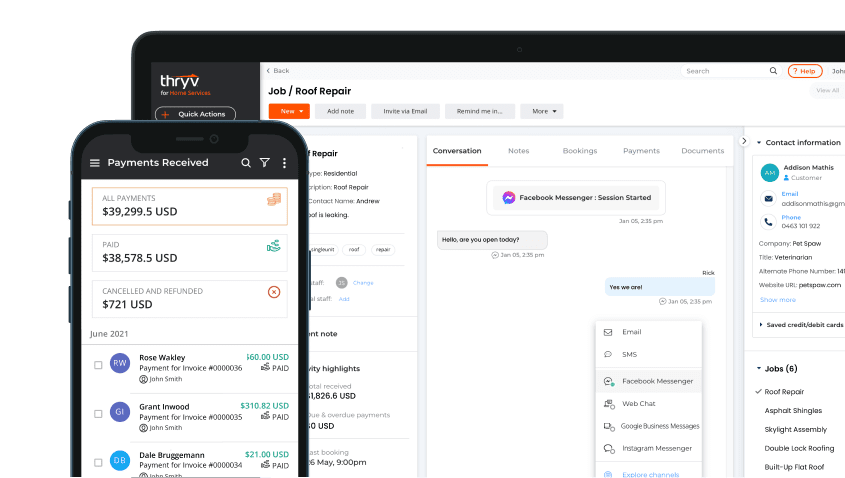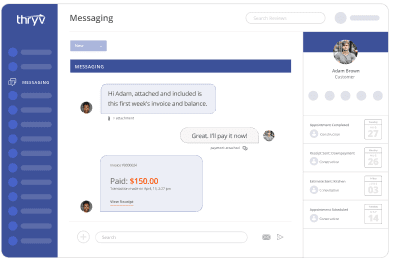HVAC Pricing: How to Set Pricing for HVAC Services
Finding the right pricing for HVAC services can feel like you’re walking on a tightrope. Set your prices too low, and you risk shrinking your margins and overworking your team. Go too high, and you might lose business to competitors offering a better perceived value.
The truth is, pricing isn’t just about math. It’s about strategy. It’s about knowing your worth, understanding your market, and using the right tools to stay consistent, competitive, and profitable. Whether you’re just starting an HVAC business or reevaluating what you charge for services, this guide will walk you through the essentials – calculating your costs, choosing a pricing model, and using tools like HVAC calculators to simplify the process.
We’ll also explore key factors that influence pricing for HVAC services, including customer expectations, value perception, and market rates. Along the way, we’ll touch on HVAC marketing ideas, licensing and certification requirements, and how HVAC software for small businesses can support your long-term success.
Ready to set smarter prices and build a more sustainable business? Let’s get started.
Understand your costs before setting prices
Before you can confidently set pricing for HVAC services, you need a clear picture of what it actually costs to run your business. Without that foundation, you may end up setting prices that leave you with slim margins – or worse, a loss.
Start by breaking down your costs into two categories:
- Fixed costs include expenses that stay the same month to month, like insurance, licensing fees, rent, and salaries.
- Variable costs can change depending on the job. These may include materials, fuel, subcontractor payments, and hourly labor.
Don’t forget the hidden expenses HVAC businesses often overlook. Travel time between appointments, ongoing HVAC technician certification & license renewals, equipment maintenance, and administrative overhead all add up. You’ll also want to account for taxes.
Once you’ve totaled your expenses, calculate your break-even point. Then, decide on a markup that helps you stay competitive while delivering enough profit to grow your business. A strong markup strategy ensures your rates cover your costs and gives you breathing room to invest in tools and software that increase efficiency and support your long-term goals.
Common HVAC pricing models
When setting your pricing for HVAC services, the structure you choose can shape how customers perceive your business and how smoothly your operations run. Two of the most common approaches are flat-rate and hourly pricing, also known as time and materials. Each comes with its own set of advantages and drawbacks.
Flat-rate pricing
With this approach, you charge a fixed price for a specific service, regardless of how long the job takes. This makes it easier for customers to understand the cost upfront and for you to avoid disputes over hours worked.
- Pros: Builds trust with customers, speeds up sales, and simplifies quoting. It’s ideal for routine services like tune-ups or filter replacements.
- Cons: Requires accurate job costing and forecasting. If a job takes longer than expected, your profit margin shrinks.
Hourly (time and materials) pricing
In this model, you charge an hourly rate plus the cost of parts and materials. This allows more flexibility, especially for complex repairs or unpredictable jobs.
- Pros: Protects your profit when jobs run long or require additional labor. Gives customers a breakdown of how their money is spent.
- Cons: Can lead to pricing uncertainty for customers. Some may assume that working slowly will result in higher bills, which can damage trust and potentially hurt repeat business.
Additional pricing structures to consider:
- Tiered pricing or service bundles: Grouping your services into basic, standard, and premium packages can help you highlight added value and guide customers toward more comprehensive options. This structure is great for upselling and reinforcing the benefits of seasonal maintenance, extended warranties, or HVAC marketing ideas like loyalty programs.
- Project-based pricing: For larger jobs, like full-system replacements or HVAC installations in new construction, quoting a single project fee keeps things clean and easy to manage. It streamlines communication and reduces back-and-forth during the sales process. Just be sure to build in buffers for unexpected costs and delays.
No matter which model – or combination – you choose, the goal is to stay profitable while delivering clear, consistent pricing your customers can understand and trust. Using HVAC business software can help you build, manage, and adjust pricing structures as your business grows.
Research market rates in your area
Even the most carefully calculated pricing structure won’t work if it’s out of sync with your local market. To stay competitive – and profitable – it’s important to understand what other HVAC businesses in your area are charging for similar services.
- Start by benchmarking your competitors. Look at local websites, online reviews, and service marketplaces to get a sense of average rates for common HVAC services. Pay attention to how others structure their pricing – whether they offer flat rates, hourly rates, or bundled packages – and note what’s included in each.
- Use tools and directories designed for HVAC pricing comparisons. Some industry sites and HVAC software solutions offer tools that help you see how your prices compare to others in your region. These insights can help you fine-tune your rates, identify gaps in your offerings, or spot opportunities to charge more based on service quality.
- Ask your customers. After a job is complete, consider asking how your pricing compares to their expectations. Honest feedback about value, clarity, and affordability can reveal a lot, and it can guide adjustments to your pricing or the way you communicate it.
Remember, being the cheapest HVAC business on the block isn’t necessarily the goal. Customers often equate price with quality, especially in industries like HVAC, where safety, comfort, and reliability are on the line. Pricing for HVAC services should reflect not just your costs, but the value you deliver – and how your business stacks up in the local landscape.
Factor in value, not just time and materials
When it comes to pricing for HVAC services, many business owners default to a simple formula: time + materials + markup. But if that’s all you’re charging for, you might be leaving money on the table. Customers aren’t just paying for your time – they’re paying for peace of mind, convenience, and quality.
- Perceived value drives pricing. Homeowners are often willing to pay more if they feel confident in your expertise, customer service, or responsiveness. Something as simple as showing up on time, wearing branded gear, or offering next-day service can justify a higher price point.
- Highlight your differentiators. If you offer 24/7 emergency service, carry top-tier certifications, or back your work with a satisfaction guarantee, say so. Features like extended warranties or same-day repairs help reinforce the value of your service and separate you from lower-priced competitors.
- Consider value-added services. Think beyond the core job. Can you offer system inspections, energy-efficiency audits, or maintenance plans that add ongoing value? These extras can increase customer loyalty and revenue without requiring a major investment of time.
Pricing isn’t just about covering costs – it’s about confidently charging what your service is worth. Communicating that value clearly, especially through estimates or service descriptions, can help you grow your revenue without undercutting your brand. And with the right HVAC software for small businesses, you can track which services deliver the most value and adjust your pricing strategy as needed.
Adjust your pricing over time
Pricing isn’t a set-it-and-forget-it task. As your business evolves and the market shifts, your pricing should change, too. Regularly reviewing your rates ensures you’re keeping up with rising costs, customer expectations, and seasonal trends.
- Schedule regular pricing reviews. At least once a year – ideally every quarter – take a fresh look at your rates. Are your materials or labor costs increasing? Have your competitors raised their prices? Are you consistently undercharging for certain services?
- Watch for inflation, seasonality, and demand. Fuel prices, equipment costs, and even weather patterns can affect your bottom line. During peak seasons, you may be able to charge a premium for quick-turnaround jobs. In slower months, offering bundled discounts or promoting HVAC marketing ideas can help you keep your schedule full.
- Be transparent with loyal customers. Sudden price hikes can cause friction, especially with returning customers. Communicate changes early and clearly. Consider offering loyalty perks, discounts on service plans, or value-added bonuses to maintain trust.
- Know how to handle negotiations. It’s common for some customers to ask for a lower price. Decide in advance how flexible you want to be. Offering options at different price points – like a basic repair vs. a full replacement – can help you meet their budget without compromising your pricing integrity.
By building flexibility into your pricing strategy, you’ll be better prepared to grow sustainably.
Streamline pricing and estimating with the right tools
Setting prices is one thing – quoting them accurately and consistently is another. As your business grows, manual estimates and guesswork can lead to mistakes, delays, or inconsistent pricing. The right tools can help you simplify or automate your process, build trust with customers, and save a ton of time.
- Start with an HVAC calculator. These tools let you plug in your labor rates, materials, overhead, and markup to quickly generate accurate job estimates. They’re especially helpful when you’re trying to standardize pricing across your team or provide quotes on-site.
- Invest in HVAC business software. Software for HVAC businesses can automate your quoting process, track pricing history, and ensure your team sticks to the right rates. Look for software that includes built-in templates, mobile access, and the ability to adjust for job complexity or location.
- Improve speed and accuracy with HVAC service software. The more streamlined your quoting process and communication, the more professional you appear – and the faster you can win jobs. HVAC management software can help you respond quickly to inquiries, deliver clear proposals, and reduce errors caused by manual entry.
Whether you’re just starting to explore software for HVAC companies or already using basic tools, upgrading your tech can have a major impact. Reliable HVAC software helps you quote with confidence, avoid underpricing, and close more deals without getting bogged down in admin work.
Get help with pricing from Thryv
If setting and managing pricing feels overwhelming, you’re not alone – and you don’t have to do it all manually. Thryv® is a cloud-based software solution that helps you run and grow your business more smoothly and efficiently.
On Thryv’s do-it-all platform, you’ll find a full suite of tools designed specifically for service-based businesses, including HVAC companies. From scheduling and CRM to invoicing and communication, it’s all connected in one place – so you can spend less time switching between apps and more time growing your business.
When it comes to pricing, Thryv’s built-in tools help you:
- Create professional estimates fast.
- Use consistent pricing across your team.
- Adjust rates easily as your business evolves.
- Track customer approvals and payments in real time.
- Make payment processing a breeze, accepting payment by credit card, bank transfer, digital wallets, and cash or check.
Free resources for HVAC businesses
In addition to subscription-based software, Thryv offers a variety of free tools for HVAC business management.
Free guides
- Small Business Software for HVAC Businesses: A look at the software tools essential to managing your business with less time and effort.
- The Small Business Guide to HVAC lead generation: Get tips and strategies for HVAC lead generation to keep your pipeline full of interested customers.
- The Ultimate Guide to Starting an HVAC Business in 2025: A step-by-step outline for getting your HVAC business off the ground.
Free tools
- Job tracking tool: Track all your jobs and automatically calculate the number of jobs completed, total revenue generated, total costs, and net profit.
- Job cost calculator: Determine the cost of an individual job by entering costs for parts and labor, and factoring in discounts.
- Invoice generator: Create professional invoices for customers quickly and easily.
- Estimate calculator: Produce estimates with just a few clicks.
- Inventory tracking spreadsheet: Use this spreadsheet to track inventory levels of filters, thermostats, valves, controls, temperature sensors, and other
parts and equipment.
The benefits of Thryv software
More than 100,000 small businesses nationwide rely on Thryv to run their businesses more smoothly. With Thryv’s do-it-all platform, you can:
- Work anywhere: You can use Thryv anywhere, on any device – mobile phone, tablet, laptop, or desktop. Wherever your work takes you, you’ll have the software you need at your fingertips.
- Be more productive: With all your business software on one platform, you can stop repeatedly logging in to multiple applications throughout the day. Simply log in once to access everything you need.
- Get help when you need it: Thryv’s unlimited support includes personalized help with setup and 24/7 assistance.
- Keep using the software tools you already know: Thryv integrates seamlessly with all the tools you already use, like Gmail, QuickBooks, Yext, PayPal, and more.
- Protect your data and your customers: Advanced data encryption and customizable account access controls help to protect your data and keep your customers’ information secure.



